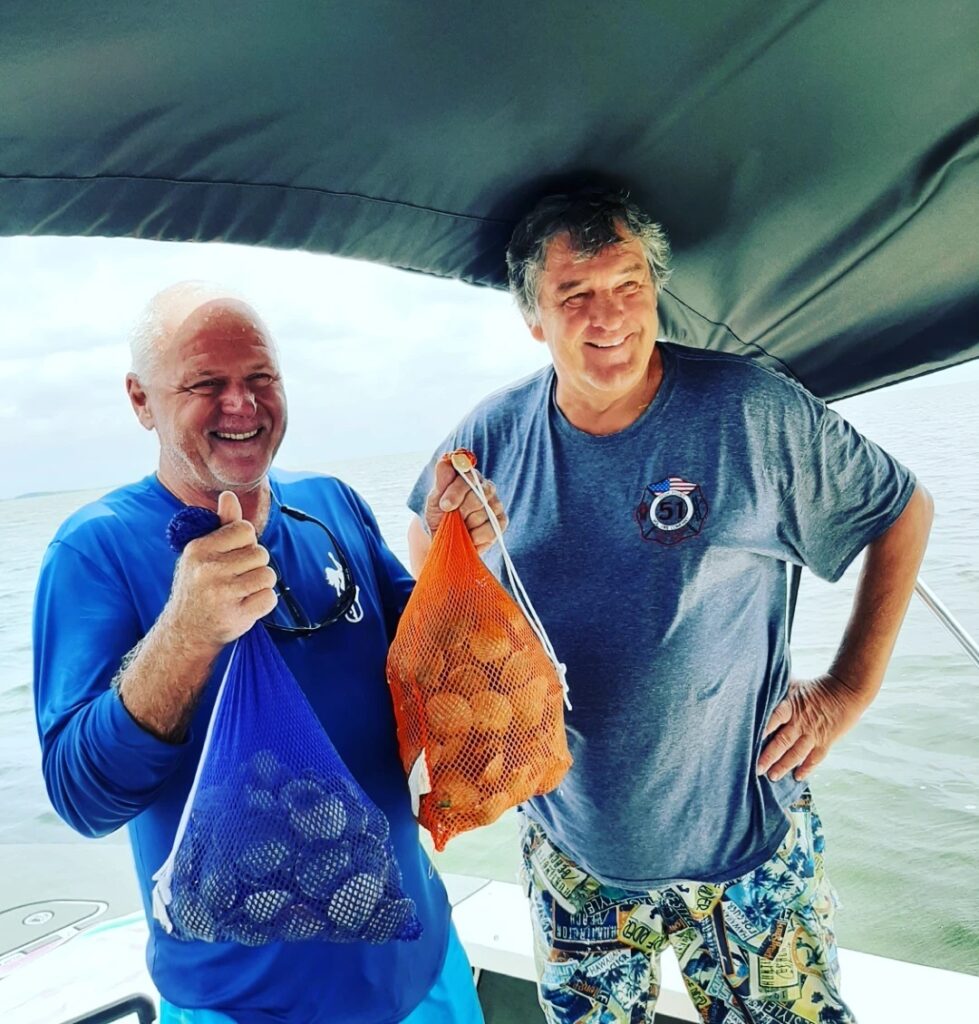
We just got back from Crystal River where we spent a couple of days scalloping in the warm gulf waters between Crystal River and Homosassa. This was only my third attempt at diving for scallops as an adult, but I do vaguely recall searching for these elusive creatures in Pine Island Sound when I was a kid. In fact, back in the 1950s and 1960s, bay scallops were so abundant in the Sound that they supported a thriving commercial and recreational fishery.
Somehow, in the mid-1960s, the scallop population crashed, a phenomenon many people blamed on the construction of the Sanibel Causeway in 1963. The theory was that the causeway islands blocked the flow of water from the Caloosahatchee River. As a result, fresh water backed up into the estuary and killed the scallops since they tend to die if the salinity drops below 20 parts per thousand.
Although this theory makes sense, it doesn’t explain why scallop populations collapsed at the same time up and down Florida’s Gulf Coast.
Steve Geiger of the Florida Fish and Wildlife Conservation Commission believes that a change in water quality, along with loss of habitat, and coastal development all contributed to the collapse of the industry. Another contributing factor would be red tide which kills scallops. The number of red tide outbreaks from Sarasota County to Collier County has been increasing in recent years.
Geiger recognizes that there are many stressors involved in the decline, but he is worried because the scallop populations are not recovering.
In northern Florida, however, scallop populations have remained healthy, so recreational harvest is allowed from the Pasco-Hernando county line to the west bank of the Mexico Beach canal in Bay County. One reason these areas have not been as affected as the southern waters might have to due with the lack of development along this coast.
Several different organizations are trying to help the scallops return to Southwest Florida. For example, scientists are placing juvenile scallops in cages in Tampa Bay and monitoring them until they spawn in the summer. Most scallop larvae stay in the same place where they were spawned. However, some will float on the tides and enter the gulf where they settle in other estuaries. Scallop populations have been fluctuating in Southwest Florida with restoration areas going back and forth from stable to vulnerable. In Pine Island Sound, the population has gone from stable to collapsed.
One theory proposed by Geiger is that the changes that are occurring in Florida Bay are affecting Pine Island Sound since Florida Bay provides a source of larvae for the Sound. Apparently, the population can get stable, but it falls back to vulnerable and at times to collapsed.
Even though the population is not recovering as fast as we would like, Geiger feels that the efforts researchers are making to bring the scallops back is having a positive effect. Although the scallops are not thriving in Southwest Florida, they are still surviving.

As a result, to get some fresh scallops this year, we took our motor home to Crystal River where we could try our hand at scalloping. The recreational scalloping season begins in July and ends in September. The specific dates differ depending on the county, so it is best to check the Fish and Wildlife website for exact opening and closing dates. Scallops are found about two to three miles offshore wherever there is eelgrass or turtle grass.
Catching the scallops isn’t really that hard. All you need is a mask, snorkel, and fins as most are in shallow water. You also need a dive flag that is at least 20 inches by 24 inches. Once you get into the water, the fun begins. Spotting the scallops from the surface is challenging for the novice. Much like looking for lobster in the Keys, speed should not be a factor. Like the lobster, scallops blend in well with their environment, so if you are just swimming along hoping for them to just appear, you will not do very well. We learned that slowing down and almost just drifting with the current gave us a better chance to spot the scallops which were nestled among the grass or sitting on the bottom.
Some people believe that it is important to pick the tides. They claim that the best time to scallop is on the last part of the outgoing tide and the first part of the incoming tide. If you are looking for scallops on a slack tide, it is easier to spot those that hide at the base of the sea grass blades as they are standing straight up.
The first time we went scalloping with our children, we were told to wait until the incoming tide. We went out about an hour before the tide changed. We caught very few scallops before the tide started to come in, but once it came in, the scallops started moving around, making them easier to spot and easier to catch. The problem with the tide theory is that you need to plan your trip around the tide changes, and that isn’t always possible.
In any case, scalloping is a wonderful family activity that everyone can enjoy. Even if you don’t have a boat or don’t know the area, it is easy to find a guide to take you out to the scalloping grounds, show you what to do, help add to your catch, and even clean the scallops when you are back at the dock. Then all you need to do is find a recipe and start cooking (or you can take them to a local restaurant, and they will do the cooking).
Source:
Lollar, Kevin. “Tide turns for bay scallops, restoration continues in Tarpon Bay.” News-Press.
30 Jul 2015.